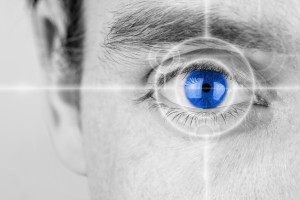What is Keratoconus?
WHAT IS KERATOCONUS?
Keratoconus is a thinning disorder of the cornea that causes visual distortion. Common symptoms include: ghosting, multiple images, glare, halos, starburst around lights, blurred vision and eye irritation with excessive eye rubbing.
The earliest signs of this condition are usually blurred vision and frequent changes in the patient’s eye glass prescription. Sometimes vision cannot even be corrected with glasses. Symptoms typically begin in late teenage years or early twenties, but can start at any time.
Keratoconus requires a diagnosis from a doctor trained to recognize the symptoms. Keratoconus can usually be diagnosed with a slit-lamp examination. Classic signs the doctor may see include:
• Corneal thinning
• Fleischer’s ring (an iron colored ring on the cornea)
• Vogt’s striae (stress lines from corneal thinning)
• Scarring
Your doctor may also obtain corneal topography (a computerized instrument that takes three dimensional maps of the cornea to look for any asymmetry).
The exact cause of keratoconus is unknown. Some theories include:
Genetics: One scientific view is that there does appear to be a familial association with keratoconus. Some studies show that these corneas lack important fibrils that structurally stabilize the anterior cornea and thus allow the cornea to bulge forward.
Environmental: Patients with keratoconus have corneas that are more easily damaged to eye rubbing from allergies, poorly fitting contact lenses, atopic disease such as hay fever and eczema.
Hormonal: Another theory is that the endocrine system may be involved because keratoconus is generally first detected at puberty and may progress during pregnancy.
Treatment of keratoconus
Treatment options focus on correcting distortion in vision caused from the thin and bulging cornea.
• Eyeglasses or contact lenses: may be used to correct nearsightedness and astigmatism caused by keratoconus. In patients with severe astigmatism, rigid gas permeable contact lenses may be a more appropriate option.
• Intacs plastic rings: These are inserted into the mid layer of the cornea to flatten and change the shape and location of the cone.
• Corneal Crosslinking: This procedure works by increasing collagen crosslinks which are the natural anchors within the cornea. These anchors are responsible for preventing the cornea from bulging out and becoming irregular. Please be aware that this treatment is not a cure for keratoconus. The aim is to slow the progression and prevent further deterioration in vision. This treatment is currently in the US Food and Drug Administration clinical trials.
Corneal Transplant Surgery: In very advanced stages of keratoconus where there is scarring and extreme thinning (about 15-20% of patients), this procedure may be an option. Also known as corneal grafting, this is a surgical procedure where a damaged or diseased cornea is replaced by donated corneal tissue (the graft) in its entirety (penetrating keratoplasty) or in part (lamellar keratoplasty). The graft is taken from a recently deceased individual with no known diseases or other factors that may affect the viability of the donated tissue or the health of the recipient.
If you have been diagnosed with Keratoconus or feel you have symptoms, we encourage you to make an appointment with our office to better understand the options you have to improve your vision.

Share This